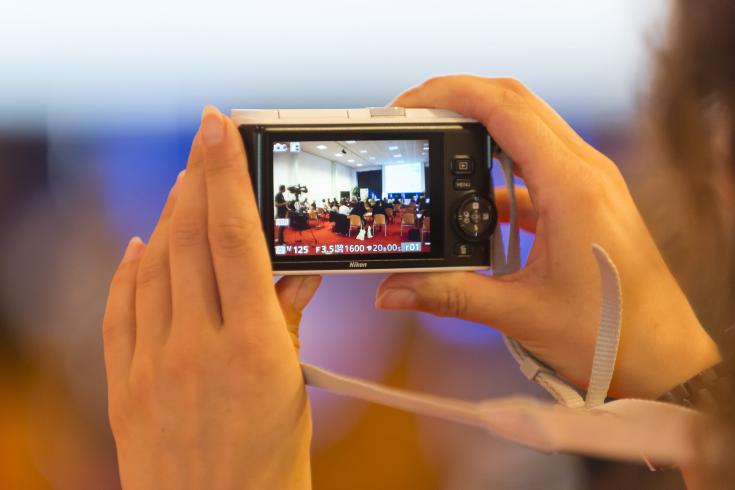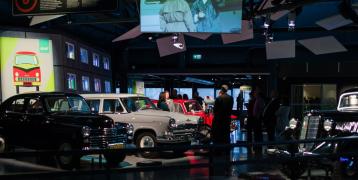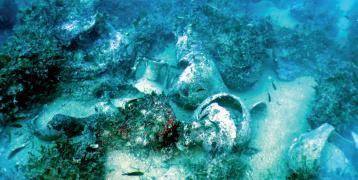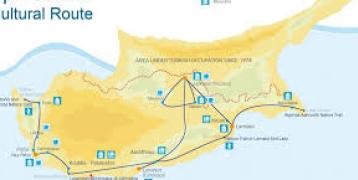Digitalisation of heritage

On 18 October 2022, the Interreg Europe Policy Learning Platform held an online webinar on digitalisation of heritage, the first episode from the cultural routes and itineraries series.
The webinar presented inspirational practices from the Interreg projects Innocastle, CHRISTA and KEEP ON, as well as a keynote speech from the European Cultural Tourism Network. Many examples of digitalisation projects have been shared with participants, to inspire change in local and regional heritage management.
Webinar agenda
Concept creation and moderation by Astrid Severin and Magda Michaliková, Thematic Experts of Resource and environment efficiency.
00:01:04 Introduction to the topic by Astrid Severin
00:10:23 Keynote speech by Manos Vougioukas on Digital preservation of cultural heritage
00:38:07 Q&A: It sounds like a big task to digitalise the big sites in Europe, how can this be managed?
00:26:26 Presentation by Catherine Leonard on Creating an online curiosity cabinet: The digitisation of historic
00:34:53 Q&A: How does the initiative become economically feasible? Do you need a plan on how to finance everything before you start?
00:36:49 Q&A: What is the difference between digitisation and digitalisation?
00:41:11 Presentation by Agathoniki Tsilipakou on the Museum of Byzantine Culture Innovation and Digitalisation
00:51:22 Q&A: You mentioned it would be important to have the offer free of charge, could you explain why?
00:53:04 Q&A: What is the favourite activity of people?
00:56:28 Q&A: How was the development of the visitor app financed? And was it part of the CHRISTA project?
00:58:53 Q&A: After the pandemic, we don't want to just reach the same target group. You mentioned the digitalisation helped to reach groups such as disabled people. Do you have data on new target groups being reached?
01:03:14 Presentation by Dennis Dekker on the Cycling Route 1629
01:12:53 Q&A: Do you have new products that have come up?
01:13:33 Q&A: How well is the app being used? Is it well appreciated? How is the app being promoted? And how much did it cost?
01:16:40 Q&A: How do you keep the entrepreneurs and ambassadors of your app enthausiastic?
01:19:52 Wrap-up question: Where did you start? What would you recommend for aspiring digitalisation projects to avoid?
Key learnings
- In his keynote speech, Manos Vougioukas from the European Cultural Tourism Network talked about the benefits of Virtual and Augmented reality for tourism. The use of these technologies led to greater spatial presence, enjoyment, and increased motivation to visit the depicted places and heritage sites, compared to brochures.
Manos spoke about UNESCO’s Charter on the Preservation of the Digital Heritage, which states that digitalisation helps to preserve heritage for the future and allows it to be accessed in any part of the world.
- Digitalisation of heritage has some challenges as well, the usual struggles are connected to resourcing, evolving technology and systems, the quantity of material, monetising of digital products, and impossibility to compete with shared ‘actual’ experience.
On the other hand, when digitising their vast collections, the National Trust appreciated increased accessibility, public engagement, role in disaster recovery and potential for income generation.
- The Museum of Byzantine Culture uses digital applications to connect education with entertainment, for modernisation, accessibility, and new means of communication. Their 'Amusing Museum' app makes exhibitions more interactive and fun, using various guides, games and quizzes.
- To boost tourism and educate tourist and citizens of the region about local history, the city of s’Hertogenbosch (in collaboration with neighbouring cities and a volunteer group) developed an interactive app to accompany the cycling route 1629, where an important battle between Spanish and Dutch kingdoms took place in the 17th century.
Among other features, the app presents two virtual reality tour guides, based on real historical figures of Spanish and Dutch war journalists, who are leading a dialogue about the events that took place along the route.
- Many good practices were presented by the speakers, including digitalisation of Europeana for Tourism Policy Recommendations, myth of Aphrodite app, The Virtual Reality tour of Ancient Olympia as well as the practices below.
Featured good practices
The webinar closed with a panel discussion and questions from the audience. The speakers highlighted several key takeaway points in heritage digitalisation:
- Digitalisation enables access to cultural heritage for new target groups (person with disabilities, young people, students, …)
- There are possibilities to do things digitally that could never be achieved on paper, but technology cannot fully replace the analogue experience
- People make the difference in a digitalisation project; technologies are available and well known
- Good partnerships (scientists, curators, archaeologists, creatives, IT companies, local businesses, media, etc…) are key to successful digitalisation projects
- Digitalisation projects can be comparatively cheap
- Funding for digitalisation projects is available through various European, national and regional funds
- Digital apps should be easy to use and fun for the users; it is advisable to work with equipment that people already have i.e. smartphone
- Volunteers and crowdsourced information are important part of any digitalisation project
Presentations
Download the presentations below.
Keynote speech by Manos Vougioukas
Digital preservation of cultural heritage
Presentation by Catherine Leonard
Creating an online curiosity cabinet: The digitisation of historic
Presentation by Agathoniki Tsilipakou
The Museum of Byzantine Culture Innovation and Digitalisation
Presentation by Dennis Dekker
The Cycling Route 1629
Introduction presentation by Astrid Severin
Digitalisation of heritage



